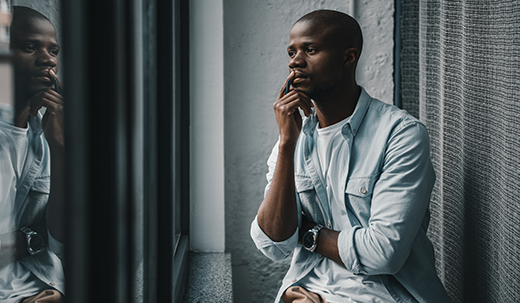Glass Blog
Regardless of the type of business you run, having a good storefront is critical in attracting customers, maximising security, and maintaining a solid business reputation.
What makes a shopfront good? Read on to find out.
Clutter-Free
No one wants to go into a store that looks cluttered and messy. Because of this, you should avoid putting too much signage and merchandise in your shopfront. Keep it relatively clear and make sure you clean it regularly.
Lighting
Making sure you have the right amount of lighting in your shopfront is also important in attracting potential customers. You want to have just enough lighting to illuminate your store and make it stand out, but not so much that it will appear overly-bright.
Security
Aside from drawing in customers, the main role of your shopfront is to keep your store secure. In order to achieve this, ensure the material your storefront is made from is strong and sturdy. If you want to install a glass shopfront, choose safety glass such as toughened or laminated glass. These glass types are significantly more resistant to force and less easy to break than standard annealed glass.
Easy to Maintain
Last but not least, for your sake, you want to ensure your shopfront is easy to clean and maintain. Select materials that stay cleaner for longer and don’t require excessive maintenance (such as glass and aluminium) over materials that get dirty quickly and require frequent touch-ups (such as timber).
If you’re wanting to install a new glass storefront in your business, call Magic Glass today. We can provide you with a free quote for a shopfront that will attract customers and keep your business safe!
If you’re planning on installing a glass fence around your pool, an important decision you’ll have to make is whether you want to get framed or frameless fencing.
Both have their pros and cons, so having a solid understanding of both fencing types will help you determine which is best for you and your needs.
Frameless Glass Fencing
As the name suggests, frameless glass pool fencing is composed of sheets of glass held in place at the bottom rather than by an entire frame around the panel. This type of fencing must be made from safety glass, so it is highly strong and durable, and significantly less likely to cause injury in the rare event of breakage.
Frameless glass pool fencing is becoming more and more popular in Australia. As it gives the illusion that there is no fence at all, many people choose frameless fencing as it is more aesthetic and does not obstruct the view of their outdoor area. Frameless glass fencing also allows for greater visibility of the pool, so it is easier to supervise children and pets.
The main drawback of frameless glass fencing, however, is that it is generally more expensive than framed options. This is because the glass panels are secured to the ground either with cement or highly-durable stainless steel spigots, which incurs greater labour, equipment, and material costs.
In addition, the glass panels in frameless fences need to be either toughened or laminated safety glass. So glazing costs are likely to be higher too.
Framed Glass Fencing
Most types of framed glass pool fences these days are semi-framed. This means that rather than the entire panel being framed, there is framing only in the space that connects two glass panels together, with the top and bottom of the glass being left clear.
This type of pool fencing provides many of the same benefits of frameless fencing. There is slightly more view obstruction, however, and potentially more maintenance requirements.
One of the main advantages of semi-framed glass fencing is that it is notably cheaper than frameless fencing. Semi-framed pool fences can be up to 30% cheaper than frameless pool fencing, making it the ideal choice for lower budgets.
Both types of pool fencing are very durable and relatively low-maintenance. Determining which is best for you will ultimately come down to your personal preference and budget.
For more information, call Magic Glass. We will be able to find the perfect glass fencing for your pool, ensuring all Australian Pool Safety Standards are met.
Safety glass is a type of glass that is designed to be less likely to break and less likely to inflict serious injury in the rare event it does break. The two main types of safety glass include toughened (or tempered) glass and laminated glass.
One of the most common questions we get asked is ‘which type of glass is the safest?’ Although toughened glass is most commonly recommended for safety, it does ultimately come down to what it is being used for.
Toughened Glass
Toughened glass is manufactured through the use of thermally or chemically controlled treatment processes. It is these processes that strengthen the glass and make it more resistant to force.
Although it is very difficult to break toughened glass, it’s not impossible. In the rare event breakage does occur, toughened glass shatters into many smaller pieces rather than large, sharp shards of glass. Because of this property, it is much safer than standard, annealed glass and is significantly less likely to inflict injury. This is why toughened glass is often used in motor vehicle windows and diving masks.
Toughened glass is also Grade A safety glass and is therefore frequently used in areas and spaces where compliance with Australian Glass Safety Standards is a must. This includes schools, hospitals, low-level glazing, aged care facilities, and child care centres.
Laminated Glass
Laminated glass is composed of two pieces of glass with an interlayer commonly made from polyvinyl butyral. This prevents the glass pieces from shattering as they remain stuck to the interlayer rather than breaking off into sharp shards.
As laminated glass sticks together even when it is shattered, it provides much greater security against potential break-ins, severe weather, and sudden impact. Because of this, laminated glass is most commonly used in shopfronts, windows and doors, balustrades, and glass fencing.
If you’re wanting to install safety glass into your commercial or residential building and are still unsure which type is best for you, give Magic Glass a call! Our friendly team will be able to provide you with recommendations and point you in the right direction when it comes to installation.
We can also provide you with a free quote for custom safety glass fabrication and installation.
When it comes to reducing noise pollution, many people choose to install soundproof glass into their windows and doors. Before doing this, however, it is important to weigh-up your options as there are different types of soundproof glass, all of which have various pros and cons.
The two main types of soundproof glass are double-glazed and laminated glass.
Double-glazed glass is simply glass panels that have two panes instead of one. The space between the two panes is filled with either air or argon to further insulate the panel.
The pros of double-glazed glass is that it’s very energy efficient, weather resistant and soundproof. The main con, however, is that it can be expensive to double-glaze your windows.
Laminated glass is similar to double-glazed glass in that it is manufactured using two panes. The space between these panes is filled with PVB (polyvinyl butyral), a type of resin that is highly effective in blocking out sound.
Similarly to double-glazed glass, laminated glass is energy efficient, weather resistant and soundproof. It’s also effective in blocking out UV rays.
Laminated glass is challenging to install, however. Not installing it properly will result in it being less effective in both thermal control and soundproofing.
Both types of glazing have similar STC (Sound Transmission Class) ratings, so what it ultimately comes down to is price and convenience. Laminated glass is cheaper, however there are challenges with installation so you should always seek the help of a glazing professional.
If you’re wanting to further soundproof your building, get in touch with the Magic Glass team today. We can custom-make and install both double-glazed and laminated glass panels that will aid significantly in blocking external sound.
- Commercial Glass Installation
- Commercial Glass Replacement
- Commercial Glass Services
- Custom Cut Glass
- Custom Glass
- Custom Glass Installation
- Double Glazed Windows
- Energy Efficient
- Glass Cut to Size
- Glass for Home
- Glass Installation
- Glass Pane
- Glass Replacement
- Glass Services
- Glass Solutions
- Glass Walls
- Laminated Glass
- Office Space
- Shopfront
- Toughened Glass
- Window Services
Whether it’s rain, wind or shine, harsh weather conditions can have significant effects on your building. Strong winds, rain and hail can cause breakage to glass whilst exposure to sunlight can cause UV rays that penetrate glass panels and damage items inside.
It is therefore important to take necessary precautions in protecting your glass windows and doors from harsh weather. Our guide on 4 Ways to Protect Your Glass from the Elements will help you get started .
Safety Glass
A great way to take precaution against weather damage is to invest in safety glass for your windows and doors. Safety glass is designed to withstand high - impact forces and extreme weather conditions, including strong winds, high-powered storms, and fluctuating temperatures.
They are often also effective in filtering UV rays, protecting the interior of your home from sun damage and boosting your home’s energy efficiency by keeping the heat out.
There are different types of safety glass, including tempered and laminated glass. To find out which is best for you and your property, read our Laminated VS Tempered Glass blog.
Security Film
Security window film is an easy and affordable way to protect your windows from weather damage. These films are made of a pliable Myler coating that is applied to the inside of your glass. They help the glass withstand larger forces and prevent glass from shattering dangerously.
Security films can be tinted, mirrored or coloured and are also effective at blocking out harmful UV rays.
Storm Windows and Doors
Storm windows and doors involve installing a second window or door panel over an existing one. They provide protection from extreme weather conditions by reinforcing windows, without replacing the existing glass.
They are a good option if you’re seeking a cost-effective method to prevent weather damage that’s more effective than security film.
Storm Shutters
Storm shutters are a type of protective shutter that attaches to the outside of a window. They are effective in protecting the window from strong winds, rain, hail, and sunlight.
Storm shutters are a popular choice for homeowners as they can be folded or rolled away so you can still enjoy your view. They are also more cost-effective than completely replacing your glass with safety glass.
Look for shutters made of aluminium, aluminium-wrapped foam, or reinforced fabric.
If you’re wanting to take precaution against weather damage, give Magic Glass a call. We can advise you on the best safety glass options for your building and can also help in the event of glass breakage caused by weather. Call us on 18 000 GLASS.
- 24 Hour Emergency Glass Repairs
- 24 Hour Emergency Glass Services
- 24 Hour Glazing Service
- After Hour Glass Replacement
- Australia Window Regulations
- Broken Window
- Damaged Window
- Emergency Glass Repair Service
- Emergency Glass Replacement Service
- Emergency Glass Services
- Glass Film Coverings
- Glass for Home
- Glass Maintenance
- Glass Repair
- Glass Repair Service
- Glass Services
- Laminated Glass
- Safety Glass
- Toughened Glass
- Window Services
- 24 Hour Glazing Service
- Custom Cut Glass
- Custom Glass
- Custom Glass Installation
- Emergency Glass Services
- Emergency Glazier Service
- Glass Company
- Glass Services
- Glazier
- Glazing Glass Services
- Glazing Services
- Laminated Glass
- Magic Glass
- Safety Glass
- Shop Window
- Shopfront
- Skylights
- Sydney Glass Company
- Tempered Glass
- Toughened Glass
- Window Glazing














